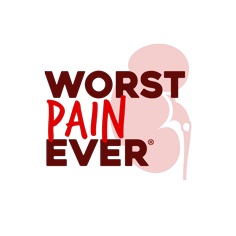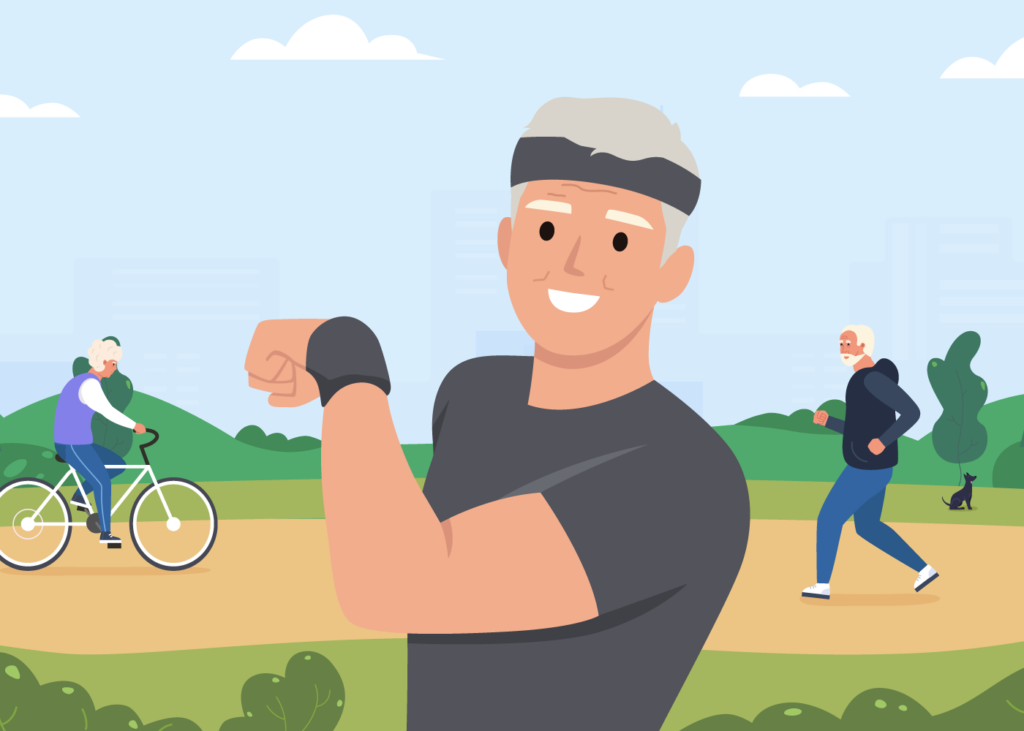Introduction
Exercise isn’t just about breaking a sweat – it could be the key to breaking free from stones! Jump in as we uncover the dynamic role of physical activity in reducing your stone risks, and start building your stone-crushing exercise plan with us!
How does exercise affect my kidney stone risk?
Generally, exercise helps to reduce your stone risk by lowering the calcium levels in your urine1. But don’t go rushing onto a treadmill just yet!
Make sure you’re drinking up throughout your workout to replenish the water lost through your sweat. Otherwise, you may become dehydrated, increasing your chances of forming new stones instead1.
Can exercise help me pass my stones?
Unfortunately, while some studies have been conducted, the role of exercise in passing stones remains unclear2. Some warriors have shared their experiences with passing stones during or after a workout, but it’s most likely a coincidence.
Don’t be too disappointed, you can still help move things along by drinking extra fluids and staying hydrated2!
I’m just starting out. How much should I exercise as a beginner?
As a rule of thumb, you should tailor your exercise routine to fit your age and fitness level.
If you’re between the ages of 18 and 64, try to get in 150 minutes of moderate-intensity exercise per week. And if you’re over the age of 64, it may be helpful to add balancing exercises, such as single-foot balances and walking heel to toe3.
More importantly, always listen to your body. Avoid any exercises that may put a strain on your lower back or abdominal area, especially after a stone surgery. Take it easy and start slowly. Rushing your progress may slow down recovery, or worse, cause unwanted injuries!
So what are some exercises I should start with?
For beginners, we recommend starting out with moderate-intensity exercises. You should be working out at 50-70% of your maximum heart rate4.
With ample hydration, moderate-intensity activities can help you lower stone risks effectively1. So, try out various exercises and see what you like. Here are some fantastic options to start with5:
- Brisk walking (faster than 2.5 MPH)
- Biking (lower than 10 MPH)
- Water aerobics
- Tennis (doubles)
- Yoga
Remember, consistency beats intensity when it comes to working out, so start slow and work your way up to more difficult variations gradually.
What exercises should I gradually work up to?
If you’re new, avoid starting out with high-intensity exercises. These activities keep your heart pumping at 70-85% of your maximum heart rate4, which may be challenging to keep up with.
Examples of high-intensity activities include5:
- High Intensity Interval Training
- Weightlifting
- Running
- Swimming laps
- Tennis (singles)
- Cycling (10 MPH or faster)
- Jumping rope
Without proper guidance, it can be easy to overexert yourself, causing other injuries like rhabdomyolysis and acute kidney injury (AKI)6. The last thing you’ll need is more health issues when trying to combat kidney stones!
What should I take note of when crafting my exercise routine?
Whether it’s dynamic stretches or a simple yoga routine, always kick off your sessions with an effective warm-up. Yoga is great for getting in a good stretch and may provide relief from stone pain7. Here are some poses to try out:
It may be tempting, but don’t cram all your exercises into a single session! Split them into 30-minute sessions, spread throughout the week. Remember, having ample rest is as crucial as getting in a good sweat.
Above all, stay hydrated during your workout. You don’t want to risk dehydration, which could ironically increase your stone risk2!
What if I’m too busy to follow an exercise routine?
Don’t worry if you can’t make time for the gym, just get extra movement in by tweaking your daily routine! Simply taking the stairs instead of the elevator can make a big difference. Alternatively, you can also work out from home. Exercises like rope skipping are cheap and highly effective to get a good sweat going.
There are SO many ways to incorporate exercise into your daily routine, just get creative!
I’ve been trying to exercise but I’m feeling overwhelmed and exhausted. What should I do?
Dealing with kidney stones can be draining, and it’s OK to feel unmotivated or stressed in the beginning. Be patient with yourself, take your time to ease into your new routine. Just don’t give up!
If you’ve been exercising consistently, but have been feeling persistent muscle soreness or fatigue, you could be experiencing a burnout. Pay attention to these signs, as pushing too hard without sufficient rest can cause harm down the line9.
Beginner or not, here are some strategies to help you stay on track:
- Set small, attainable short-term goals to build up your confidence.
- Embark on bigger, long-term goals only when you’re ready.
- Schedule full rest days, at least once or twice per week, to allow your body to fully recover – especially if you’ve undergone a stone surgery.
- Incorporate active recovery days, focusing on activities that promote gentle movement like walking or yoga.
- Track your fitness progress with fitness apps like MyFitnessPal or journaling.
Conclusion
Set the stage for lower stone risks by maintaining a well-rounded exercise routine, coupled with good hydration practices.
But remember, cultivating good habits and unlearning bad ones require patience and perseverance, so don’t let the “all-or-nothing” mindset hold you back. Allow yourself to make mistakes in the beginning, then work out the kinks in your routine along the way.
Above all, we are so proud of you for taking the first step towards a healthier and stone-free you!
References:
- Hernawan B., & Gonzales N. (2023). Correlation Between Physical Activity and Kidney Stones Formation: A Literature Review. Smart Medical Journal. Retrieved from: https://doi.org/10.13057/smj.v6i1.71483
- Polastri, M., & Andreoli, E. (2022). Physiotherapy and exercise to reduce symptoms and facilitate clearance of kidney stones in people with nephrolithiasis.International Journal of Therapy and Rehabilitation, 29(12), 1–4. https://doi.org/10.12968/ijtr.2022.0151
- Physical Activity Helps Prevent Chronic Diseases. Centers for Disease Control and Prevention. (2023). Retrieved from: https://www.cdc.gov/chronicdisease/resources/infographic/
physical-activity.htm#:~:text=Regular%20physical%20activity
%20helps%20improve,depression%20and%20anxiety%2C%20
and%20dementia - Target heart rates chart. American Heart Association. (2021). Retrieved from: https://www.heart.org/en/healthy-living/fitness/fitness-basics/target-heart-rates
- American Heart Association Recommendations for Physical Activity in Adults and Kids. American Heart Association. (2023). Retrieved from: https://www.heart.org/en/healthy-living/fitness/fitness-basics/aha-recs-for-physical-activity-in-adults
- Spada, T. C., Silva, J. M. R. D., Francisco, L. S., Marçal, L. J., Antonângelo, L., Zanetta, D. M. T., Yu, L., & Burdmann, E. A. (2018). High intensity resistance training causes muscle damage and increases biomarkers of acute kidney injury in healthy individuals. PLOS ONE, 13(11), e0205791. https://doi.org/10.1371/journal.pone.0205791
- Getting Started with Physical Activity. Centers for Disease Control and Prevention. (2023). Retrieved from: https://www.cdc.gov/healthyweight/physical_activity/
getting_started.html - Metri, K., Patra, S. K., Ramakrishna, K. K., Salvi, K., Naik, J., & Nagaratna, R. (2021). Management of acute calculus cholecystitis with integrated Ayurveda and Yoga intervention: A case report. Journal of Ayurveda and Integrative Medicine, 12(1), 187–190. https://doi.org/10.1016/j.jaim.2020.12.014
- Nazish, N. (2019). Fitness burnout is real, Here’s how to beat it. Forbes. Retrieved from: https://www.forbes.com/sites/nomanazish/2019/08/08/
fitness-burnout-is-real-heres-how-to-beat-it/?sh=d4e38565a618






